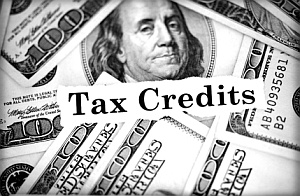Income Tax
Many Taxpayers Could Benefit from Saver’s Income Tax Credit
The credit is available to workers aged 18 years or older who have contributed to a company-sponsored retirement plan or IRA in the past year and meet the Adjusted Gross Income (AGI) requirements.
Feb. 22, 2016

Millions of American wage earners may be missing out on a valuable tax credit this year. The Saver’s Credit, also referred to as the Retirement Savings Contributions Credit by the Internal Revenue Service, is available to low- to moderate-income workers who are saving for retirement, yet just 25 percent of American workers with annual household incomes of less than $50,000 are aware of the credit, according to the 16th Annual Transamerica Retirement Survey.
“The Saver’s Credit is a tax credit. It reduces an eligible taxpayer’s federal income tax, making it an important incentive for low- to moderate-income individuals and households to save for retirement in a 401(k), 403(b), IRA, or new myRA,” said Catherine Collinson, president of nonprofit Transamerica Center for Retirement Studies. “Unfortunately, many eligible workers may be missing out on the Saver’s Credit simply because they don’t know that it exists.”
What is the Saver’s Credit?
The Saver’s Credit is a tax credit that may be applied to the first $2,000 of voluntary contributions an eligible worker makes to a 401(k), 403(b) or similar employer-sponsored retirement plan, or an IRA. The maximum credit is $1,000 for single filers or individuals and $2,000 for married couples.
“The Saver’s Credit is a tax credit above and beyond the advantage of tax-deferred savings when contributing to a 401(k), 403(b), or IRA. Because this double benefit sounds too good to be true, many eligible savers may be actually confusing the two incentives,” said Collinson.
Who Can Claim the Saver’s Credit?
The credit is available to workers aged 18 years or older who have contributed to a company-sponsored retirement plan or IRA in the past year and meet the Adjusted Gross Income (AGI) requirements.
Single filers with an AGI of up to $30,500 in 2015 or $30,750 in 2016 are eligible. For the head of a household, the AGI limit is $45,750 in 2015 or $46,125 in 2016. For those who are married and file a joint return, the AGI limit is $61,000 in 2015 or $61,500 in 2016.
Additionally, the filer cannot be a full-time student or be claimed as a dependent on another person’s tax return. For more details about eligibility, refer to this fact sheet.
How Can Workers Claim the Saver’s Credit?
“Workers who are eligible to receive the Saver’s Credit are at risk of missing it if they use the wrong tax form. The Saver’s Credit is not available on Form 1040EZ,” said Collinson. “If you are eligible to claim the Saver’s Credit, you should use Form 1040, Form 1040A or Form 1040NR.”
Some good news is that most workers who are eligible to claim the Saver’s Credit are also eligible to take advantage of the IRS Free File program for taxpayers with an AGI of $62,000 or less. Thirteen software companies make their tax preparation software available for free through Free File at www.irs.gov/FreeFile. Certain restrictions may apply.
To claim the credit, taxpayers must use Form 1040, Form 1040A or Form 1040NR. The credit is not available with Form 1040EZ. If you are using a professional tax preparer, be sure to ask about the Saver’s Credit. Consider having any refund you receive directly deposited to an IRA to further boost your retirement savings.
“Be sure to tell your colleagues, friends and family about the Saver’s Credit. Many may have contributed to a 401(k) plan or IRA and are eligible receive it — but just don’t know about it,” said Collinson. “Among those who are not saving for retirement, the Saver’s Credit might just be the nudge that they need to start. The good news is that it’s not too late to contribute to an IRA or the new myRA and claim the Saver’s Credit for 2015. You still have until April 18, 2016 to do so.”
